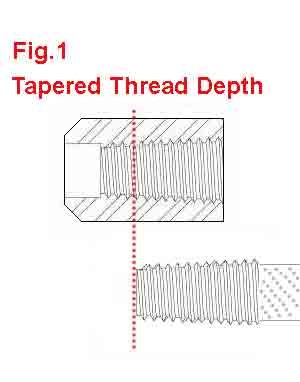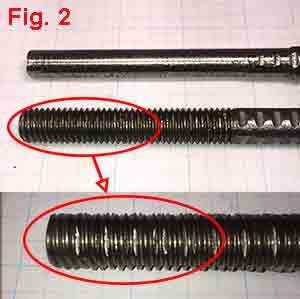As the Rebar Anchor becomes more prevalent in building design steel fabricators are experimenting with ways to fulfill these requirements more efficiently. The most common types of Rebar Anchors are;
- Dayton Superior D260 Bar Lock with Shear Type Set Screws
- Dayton Superior D106 Weldable Coupler with Straight UNC Threads
- Dayton Superior D360 Bar Lock with Taper Threads
- Lenton Weldable Coupler with Taper Threads
- Lenton Weldable Half Coupler with Taper Threads
Also used at times in conjunction with the Rebar Couplers listed above;
- Dayton Superior D250 Bar Lock with Shear Type Set Screws
- Dayton Superior D250 SCA Bar Lock with Shear Type Set Screws
The set screw type of rebar anchor provides the easiest method of coordinating the rebar installation. For the steel fabricator who will be welding these anchors on in the shop, the call out will indicate the item number and also show the rebar diameter. That is all the coordination the steel fabricator needs with the rebar contractor.
Where it becomes more difficult is when the Rebar Anchors are internally threaded. Tapered threads are very helpful in saving time during rebar installation. A straight thread requires more revolutions to achieve a full connection.
 Example;
Example;
All threaded steel needs to be engaged at a depth at least equal to the diameter of the bar to achieve full strength. So a 1” diameter rebar, or #8 Rebar, needs to be threaded into the anchor at least 1” deep to be at full strength. 1” diameter UNC threading calls for 8 threads per inch. So the rebar will be fully rotated at least 8 times to achieve the connection. In reality, it will be rotated beyond that until it bottoms out. This adds a lot of installation time.
The Tapered Thread Rebar Connector, either Dayton Superior D360 Bar Lock or Lenton Weldable Couplers, allow for much faster installation and lower jobsite cost. Figure 1 shows how the tapered thread allows the rebar to be inserted most of the way into the Rebar Coupler. At that point it will require only 30% of the rotations a straight thread requires. Yet once bottomed out, all threads will be making full contact.
What is essential to note is every coupler manufacturer develops their own standards for tapered threads. The angle, thread size and spacing are all variable. For that reason it is essential the Steel Fabricator and Rebar Contractor be coordinated regarding the supplier of each component.
 Conversely, Straight Thread Rebar couplers should be threaded to UNC threading standards;
Conversely, Straight Thread Rebar couplers should be threaded to UNC threading standards;
#4 Rebar 1/2” diameter 13 threads per inch
#5 Rebar 5/8” diameter 11 threads per inch
#6 Rebar 3/4” diameter 10 threads per inch
#7 Rebar 7/8” diameter 9 threads per inch
#8 Rebar 1” diameter 8 threads per inch
#9 Rebar 1-1/8” diameter 7 threads per inch
#4 Rebar 1-1/4” diameter 7 threads per inch
The uniform nature of straight UNC Threads makes coordination much simpler. If the bar is to be threaded independent from the coupler manufacturer it is important to understand that Rebar and Deformed Bar will not present a consistent threading surface the way round bar used for anchor bolts does. Figure 2 shows how a deformed bar will leave gouges in the threads. Rebar can present similar problems. While the bar will still function with these interruptions, the thread has been weakened.
To fully resolve the issue rebar or deformed bar presents it should be milled down to a consistent surface before threading. This does reduce the diameter. Rather than using a larger diameter bar to compensate for the milling, one solution available is to widen the existing bar in what is known as an “Upset Thread.”
Upset Thread Article June 2014





